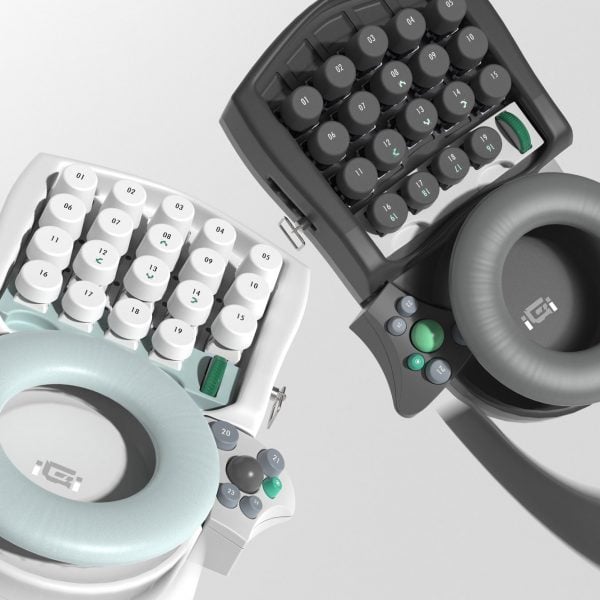Dezeen School Shows: an app designed to encourage young people to vote is included in Dezeen’s latest school show by students at Loughborough University.
Also included is a book designed to educate people on cyberbulling and a gaming device for disabled people.
Institution: Loughborough University
School: School of Design and Creative Arts
Courses: User Experience Design (MSc), User Experience and Service Design (MA), Integrated Industrial Design (MSc) and Graphic Design and Visualisation (MA)
Tutors: Dr Simon Downs, Dr Alis Iacob, Dr Andrew May, Dr Christopher Parker and Dr Patrick Pradel
School statement:
“At Loughborough School of Design and Creative Arts we strive to deliver a world-class education, developing high-quality graduates who are leading practitioners in their field.
“Our vision is to educate students to become responsive, persuasive innovators of change, able to instigate creative, intelligent responses to a variety of contemporary challenges.
“We support students’ transition from aspiring talent to confident practitioners through world-class creative arts and design education.
“Our students embody responsive, innovative and purposeful design by combining cutting-edge research, with exceptional creativity and systemic problem solving.”
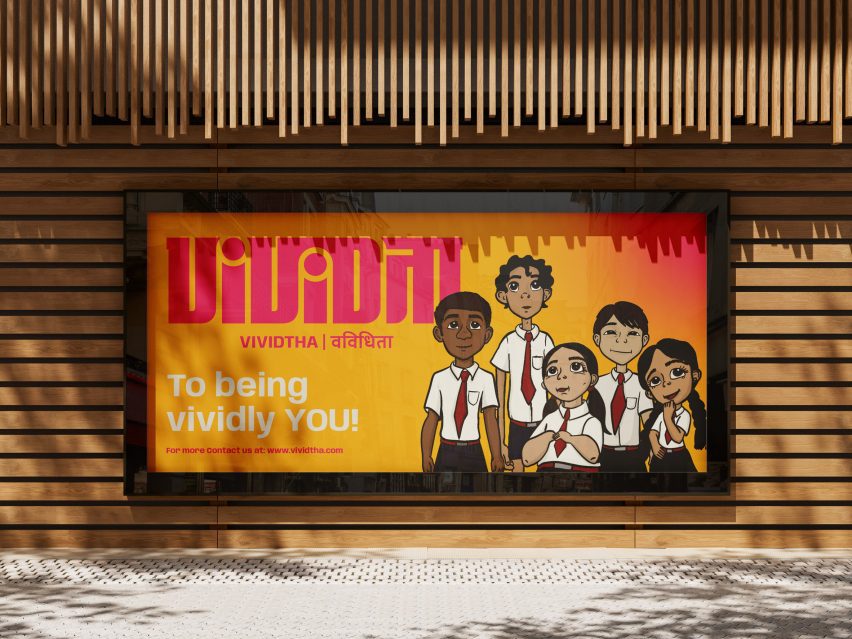
Vividtha by Ayesha Singh Bisen
“Vividtha is a campaign to address body image issues among Indian adolescents by promoting self-acceptance and celebrating diversity.
“Through storytelling, educational initiatives and strategic brand collaborations, Vividtha encourages young people to appreciate their bodies for their functionality rather than appearance.
“The campaign’s branding blends traditional Indian cultural with modern appeal, which is achieved through a bilingual logo, bold typography and vibrant colours inspired by Indian childhood experiences to create a sense of inclusivity and empowerment.
“At Vividtha’s core is a graphic novel featuring relatable characters facing body image challenges.
“It is designed for adolescents aged 12 to 14, accompanied by interactive workshops in schools that include reflective discussions and group activities, fostering body positivity and mental wellbeing in a supportive environment.”
Student: Ayesha Singh Bisen
Course: Graphics Design and Visualisation (MA)
Email: ayesha.bisen[at]gmail.com
Tutors: Dr Simon Downs and Dr Alis Lacob
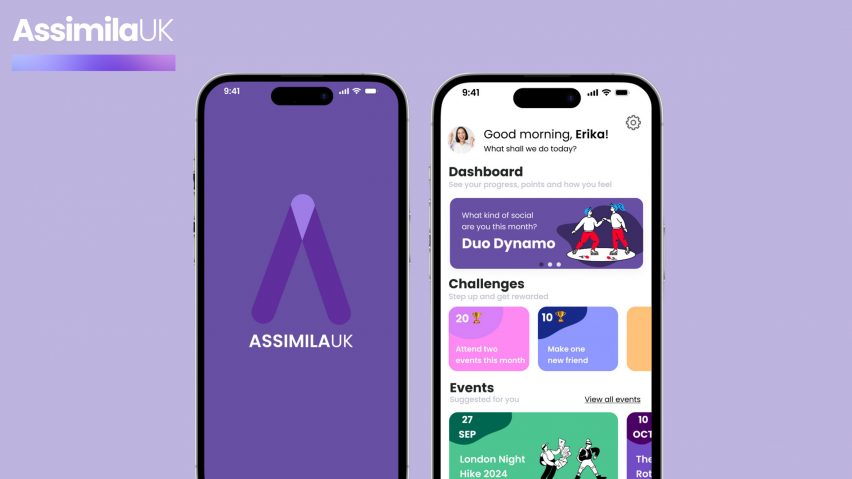
AssimiliaUK by Mehul Shah
“Migrant workers – who constitute five per cent of the global population and nearly 20 per cent in the UK – often face discrimination and social isolation, particularly in critical sectors.
“This project aims to enhance the societal engagement of Asian migrant workers through a human-centred approach.
“An iterative process involved two significant pivots and engaged six parties in primary research, brainstorming and prototyping phases that included diverse user perspectives.
“Key methods included semi-structured interviews, card sorting to prioritise services and a ‘hate letter’ exercise to identify user frustrations.
“The project identified two primary insights: the need to connect individuals in similar situations and the demand for a seamless support service.
“Key features include an events section for booking activities, a unique matching system based on challenges instead of interests and a guide function to help users navigate local culture and services.”
Student: Mehul Shah
Course: User Experience and Service Design (MA)
Email: mehul.dash[at]gmail.com
Tutor: Dr Vicky Lofthouse
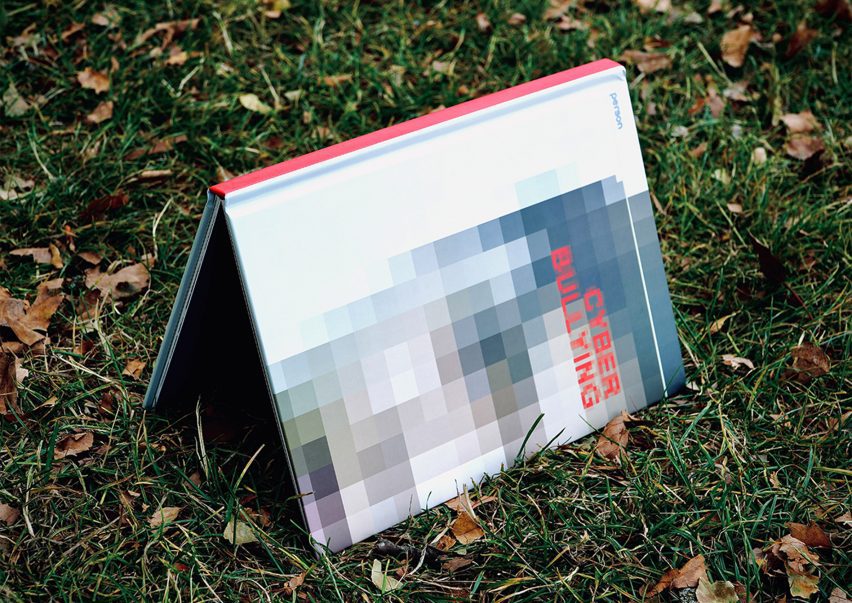
Interrogation and Visualisation of Cyberbullying by Tianhao Zhao
“The Interrogation and Visualisation of Cyberbullying project explores the emotional and psychological impact of online abuse through photography and video, focusing on the victim’s experiences and self-objectification.
“Using monochromatic imagery and strategic colour, the project evokes emotional resonance to raise awareness and encourage positive action among young people and their guardians.
“A photobook and advocacy video was created to educate and mobilise audiences, highlighting the power of cyberbullying and promoting social awareness to support its prevention and deterrence.”
Student: Tianhao Zhao
Course: Graphics Design and Visualisation (MA)
Email: 1109560778[at]qq.com
Tutors: Dr Simon Downs and Dr Alis Lacob

X-Ten 21st Century Handcuffs by Henry Belsham
“X-ten features extendable handcuffs that allow officers to securely ‘back cuff’ larger – non-compliant individuals – enhancing safety during high-intensity arrests.
“These cuffs expand from a compact 290mm to 368mm in under two seconds with one hand, ensuring ease of use, and are made from lightweight aluminium alloy and high-strength stainless steel, featuring a corrosion-resistant PTFE coating for durability and easy cleaning.
“The X-TEND cuffs are compatible with standard UK police keys and include a proven double-lock mechanism, and user testing indicated that a single, accessible release button is more effective than separate controls.
“While the protective coating offers various colours, a discreet all-black option is essential for low-profile operations, and a soft, durable TPU cushion can also be integrated into the wrist restraints for comfort and protection.
“Although strength testing was not feasible due to material access, critical internal components were carefully selected for their strength, with the extension bar and stopper crafted from high-strength stainless steel for durability.”
Student: Henry Belsham
Course: Integrated Industrial Design (MSc)
Email: henrybelsham[at]aol.co.uk
Tutor: Dr Patrick Pradel
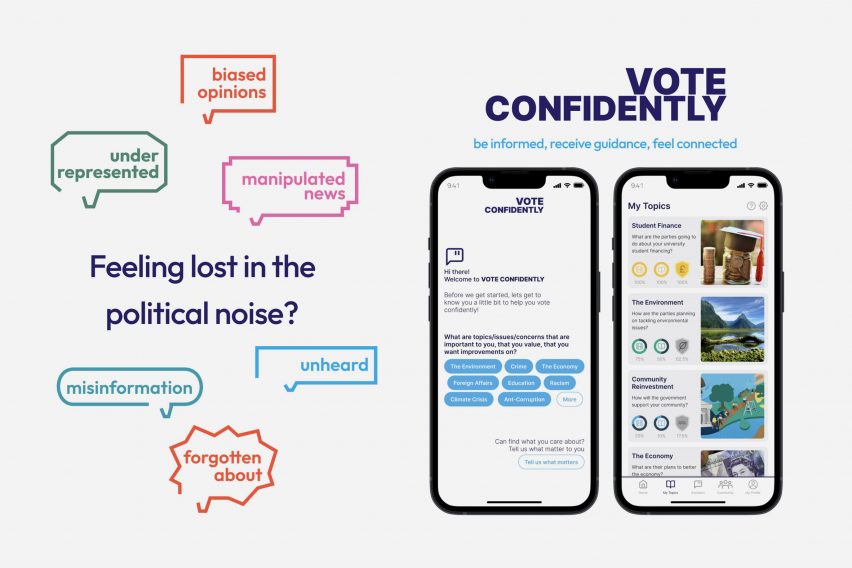
Vote Confidently by Miguel Jose Divo Gonzalez
“Young adults in the UK face under-representation at elections due to a multitude of reasons including a lack of participation, engagement and trust towards the government.
“This has recently been at an all-time low as over 70 per cent of young people believe it’s not worth voting at all.
“Despite this, they all feel inspired to act online – so how do we empower them to take that behaviour to the polls?
“Vote Confidently focuses on informing, supporting and connecting young adults by offering unbiased, reliable information and trustworthy interaction to become better informed voters.
“The main three roles of Vote Confidently are to inform with curated short-form modules on topics that matter to the user; support through the assistant’s unbiased information and guidance and connect users with shared values to foster an inclusive, collective environment.
Student: Miguel Jose Divo Gonzalez
Course: User Experience and Service Design (MA)
Email: migueldivo11[at]gmail.com
Tutor: Dr Andrew May
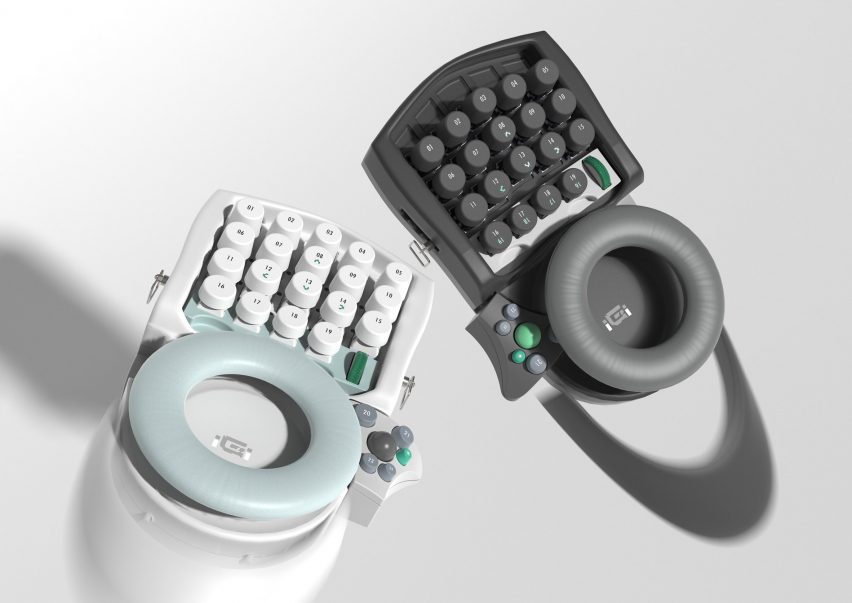
An Inclusive Gaming Interface (IGI) by Shivangee Tilak
“IGI is an inclusive gaming device designed for a wide range of gamers, including those with temporary arm injuries, mild arthritis, single-arm loss, stroke survivors and individuals with spastic cerebral palsy.
“With an estimated 492 million gamers worldwide – including a third of gamers in the UK and US – having some form of disability, IGI aims to enhance the gaming experience for those who may face barriers to participation.
“The equipment features programmable keys, a scroll wheel, a thumb unit with additional buttons and a trackball, all designed for right and left-handed use.
“The keyboard’s adjustable rows increase reachability, accommodating various hand sizes.
“At the same time, a detachable palm cushion and two wrist cushions reduce discomfort during extended gaming sessions.
“This flexible design promotes a more enjoyable and social gaming experience, especially for individuals who may feel stigmatised in other contexts.”
Student: Shivangee Tilak
Course: Integrated Industrial Design (MSc)
Email: tshivangee[at]gmail.com
Tutor: Dr Patrick Pradel
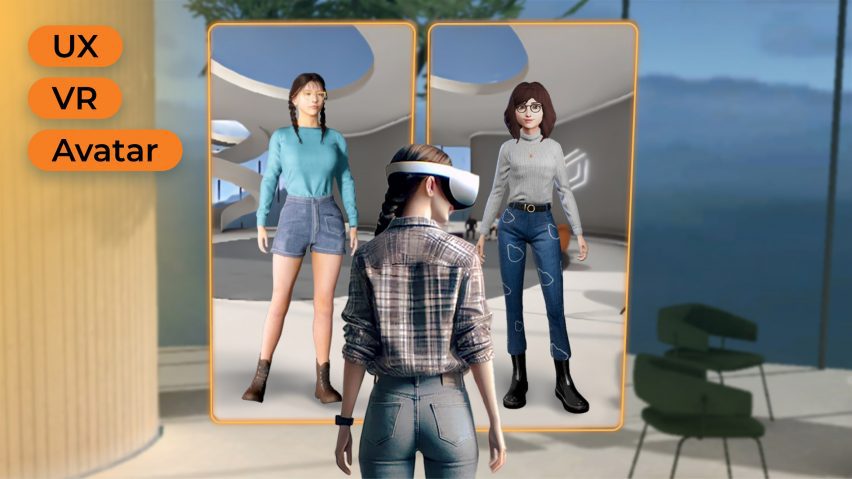
The Influence of Realistic and Idealised Avatars on Self-Esteem and Plastic Surgery Acceptance in VR by Daria Matsuk
“This project examines how avatar design in virtual reality (VR) affects women’s self-esteem and attitudes toward plastic surgery, highlighting the need for thoughtful implementation of realistic and idealised avatars.
“As digital representation grows in social and professional spaces, UX designers must prioritise customisation options and safety in VR dating while enhancing user immersion through natural social interactions, such as eye contact and body language.
“These considerations are essential for improving user experience and supporting mental health in high-stress environments.”
Student: Daria Matsuk
Course: User Experience Design (MSc)
Email: daryamatsuk[at]gmail.com
Tutors: Dr Christopher J Parker and Dr Panagiotis Balatsoukas
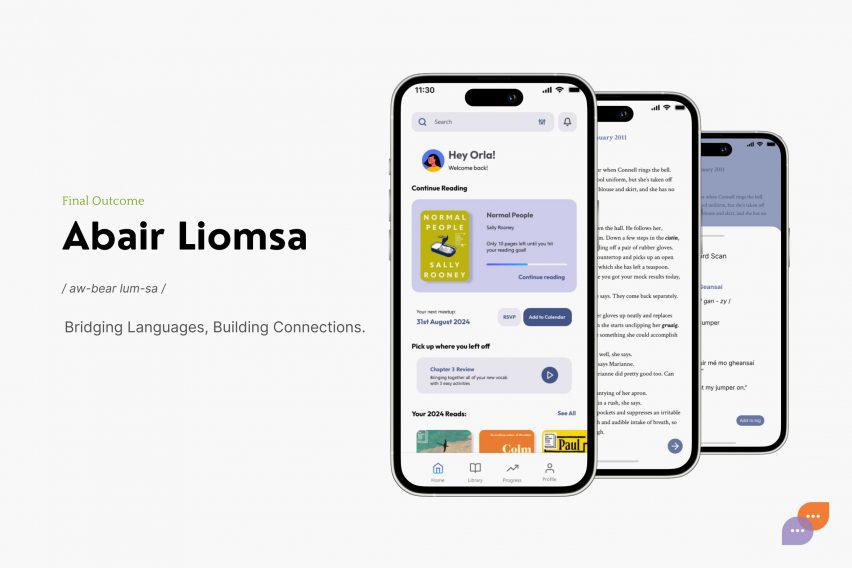
Abair Liomsa (Speak to Me) by Clodagh McCarthy
“Abair Liomsa (Irish for ‘speak to me’ and pronounced ‘aw-ber lum-sa’) is a language acquisition service for young Irish adults who are looking to build their confidence and ability in speaking the Irish language.
“The service takes the form of a bilingual book club, where users can learn at a self-determined pace, through the progressive translation of each book from English into Irish.
“It also provides personalised feedback on learning progress and fosters community by connecting a group of people who share an inherent desire to speak their native language.
“The service aims to equip users with the skills, confidence and support they need to re-engage with the Irish language after leaving second level education in Ireland.”
Student: Clodagh McCarthy
Course: User Experience and Service Design (MA)
Email: clodaghmccarthy99[at]gmail.com
Tutor: Dr Panagiotis Balatsoukas

The Impact of Sound on Tactile Perception when Shopping in VR Environments by Yi-Tyng Tzeng
“This study investigates how enhancing tactile perception can improve the shopping experience in virtual reality (VR), addressing a gap in existing research that predominantly focuses on visual stimuli.
“As businesses adapt to the rise of virtual retail, it’s crucial to recognise that touch significantly influences purchase desire and consumer trust.
“Findings reveal that inconsistencies between a product’s sound and appearance – such as mismatched audio for high heels and jewellery – can lead to confusion and diminished confidence in product authenticity.
“Ensuring sensory consistency is vital for enhancing user satisfaction and encouraging purchases in VR shopping environments.”
Student: Yi-Tyng Tzeng
Course: User Experience Design (MSc)
Email: dingding3645[at]gmail.com
Tutors: Dr Christopher J Parker and Dr Panagiotis Balatsoukas
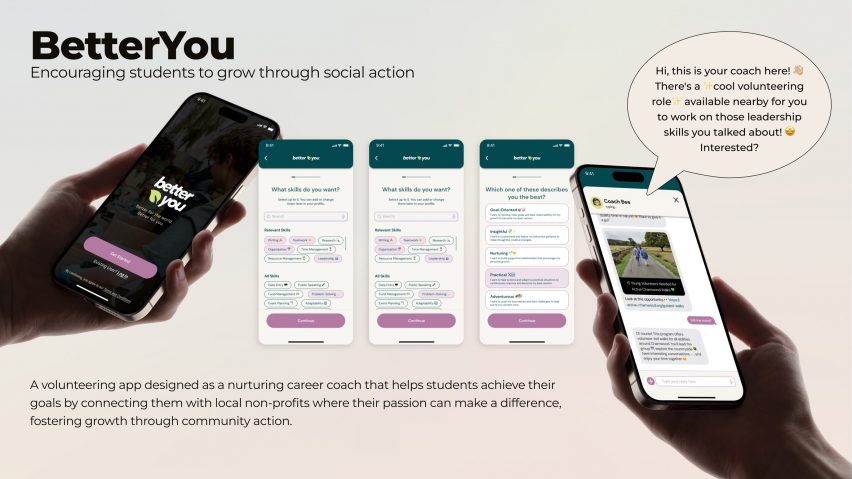
Better You by Upasana Paul
“This project was inspired by my previous experience as an urban planner, where I saw how challenging it was to ensure that user voices were genuinely heard and considered in planning processes.
“This project, and my motivation for pursuing user experience design, stems from a desire to make design more democratic and people-centric.
“For this project, I applied a future-state design approach and envisioned the following scenario for the UK in 2040.
“It’s 2040 and the youth in the UK are civically engaged and actively championing causes in their communities.
“Every young person has the opportunity to connect with their neighbourhood, building meaningful relationships and contributing to a vibrant and harmonious national community.”
Student: Upasana Paul
Course: User Experience and Service Design (MA)
Email: upaul.ux[at]gmail.com
Tutor: Prof Gary Burnett
Partnership content
This school show is a partnership between Dezeen and Loughborough University. Find out more about Dezeen partnership content here.

